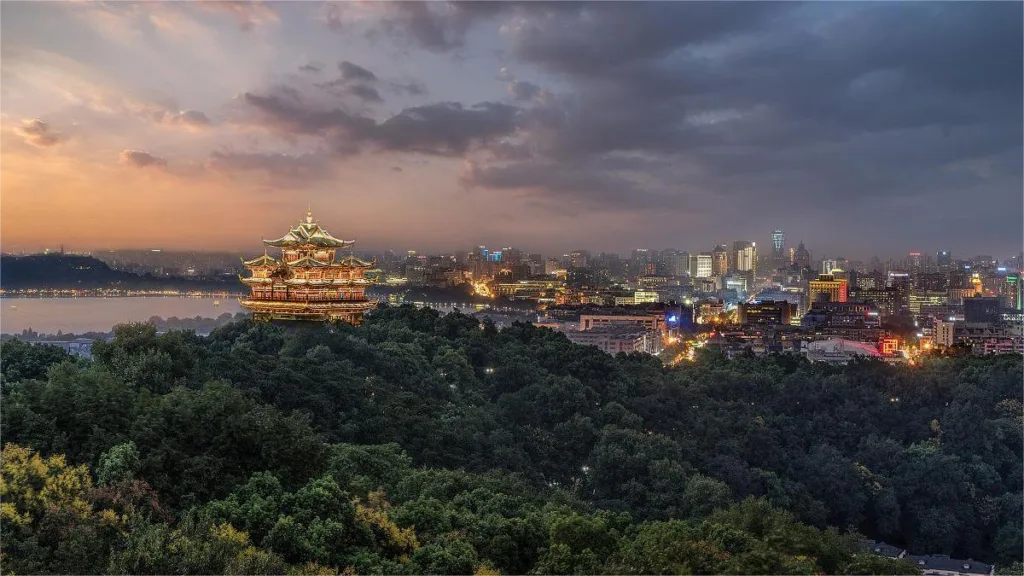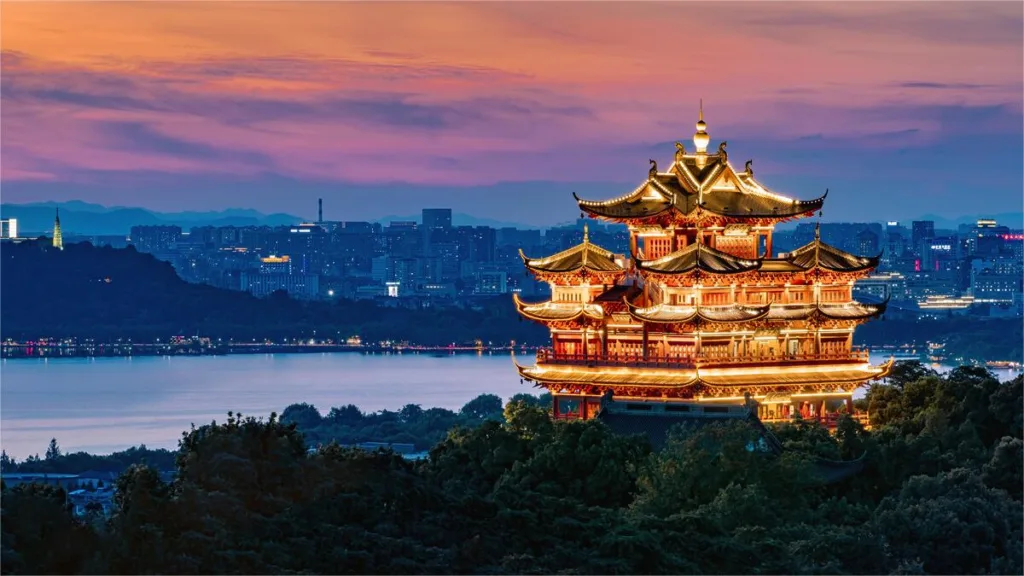Southern Song Imperial Street (南宋御街) is a significant thoroughfare laid in the ancient capital of the Southern Song Dynasty, Lin’an, present-day Hangzhou. Historical documents like the “Xianchun Lin’an Records” note that over ten thousand stone slabs were utilized in the construction of Southern Song Imperial Street. Serving as the central axis of Lin’an City, it spans approximately 4185 meters. This street held a special purpose as the dedicated route for the emperor during ancestral worship at the Jiling Palace (located on the west side of modern Wulin Road, a site housing statues of imperial ancestors) during the “Four Meng” ceremonies, marking the four solar terms.
During the Southern Song era, the emperor would conduct a three-day ritual every three years, traveling along Southern Song Imperial Street to Jiling Palace for ancestral offerings. After spending a night, the emperor would return to the Taimei (now near the Drum Tower, a site for ancestral tablets of the imperial family) for another night and proceed to the suburban altar for celestial worship. After another night’s stay, the imperial entourage would return to the palace. It is said that to avoid damaging the stone slabs, the emperor’s procession would temporarily remove them and cover the street with sand as they passed through. The Southern Song Imperial Street thus stands as a historical route, reflecting the grandeur and ceremonial significance of the imperial rituals during that era.
Table of Contents
- Basic Information
- Location and Transportation
- Highlights of Southern Song Imperial Street
- Vlog about Southern Song Imperial Street
- Attractions near Southern Song Imperial Street
Basic Information
| Estimated Length of Tour | 2 hours |
| Ticket Price | Free |
| Opening Hours | 24 hours a day |
Location and Transportation
Southern Song Imperial Street is situated in the Shangcheng District of Hangzhou, Zhejiang Province, China. It extends from the north of the imperial city gates, namely Huangcheng North Gate and Ningmen (now the intersection of Wansong Ridge and Fenghuangshan Road). The street passes through landmarks such as Chaotianmen (present-day Drum Tower), Zhongshan Middle Road, Zhongshan North Road, Guanqiao (now Guanqiao Bridge), and continues to the intersection of Fengqi Road and Wulin Road. This historical thoroughfare spans a significant part of the city, offering a journey through the heart of Hangzhou’s ancient core.
To get there, you can choose one of the following ways:
Bus: Take bus 8, 84, 195, or WE1314 and get off at Qinghefang Stop to reach the middle section of the Southern Song Imperial Street.
Metro: Take Metro Line 1, get off at An’ding Road Station (安定路站), get out of the station from Exit D to reach the north end of the imperial street. Or take Metro Line 5 or 7, get off at Jiangcheng Road Station (江城路站), and get out of the station from Exit E to reach the middle section of the street.
Highlights of Southern Song Imperial Street
Former Commercial and Recreational Hub

Southern Song Imperial Street was not only a political and ceremonial axis but also a bustling commercial center. It housed tens of thousands of shops along its length, with half of Lin’an’s population residing nearby. The stree can be divided into three segments. The first segment, from Wansong Ridge to the Drum Tower, served as the political center, located near the imperial palace and the central government offices. It attracted royalty, officials, and elites, resulting in a concentration of purchasing power. Shops in this section predominantly dealt in high-end luxury items such as gold, silver, and precious treasures.
The second segment, from the Drum Tower to Zhongan Bridge, with Yangbatou and Guanxiangkou at its center, emerged as the commercial heart of the era. According to records in the “Dreams of Liang,” this stretch was home to renowned and longstanding shops, numbering over 120. The final segment, from Zhongan Bridge to the intersection of Wulin Road and Fengqi Road, marked the convergence of trade and cultural entertainment. It hosted the largest entertainment center in the capital, North Wa (北瓦), where diverse performances such as dramas, puppet shows, acrobatics, shadow plays, and storytelling captivated thousands of citizens daily.
Revitalization of the Imperial Street

In 2008, architect Wang Shu initiated a design and reconstruction project for Southern Song Imperial Street. This effort included introducing water features with 14 ponds of various sizes constructed using cobblestones. These ponds, ranging from one to over ten meters wide where space allowed, interwove with the old street, forming a scenic integration of flowing water and historical ambiance. The renovation also involved refurbishing the aged buildings. Wooden structures below the third floor (including the third floor) retained their sloped roofs, featuring small green tiles and preserving the distinctive tiger windows on the rooftops – a characteristic of traditional Jiangnan residences. The color scheme of the walls primarily consisted of black, white, and gray, complemented by modern and vibrant hues.
Culinary Delights

Beyond its historical significance, Southern Song Imperial Street is now home to numerous time-honored eateries:
- Gongdelin (功德林), established in 1922, is renowned as a pioneer of vegetarian cuisine, offering vegetarian dishes that match the flavors and appeal of non-vegetarian counterparts.
- Huang Fan’er (皇饭儿) focuses on Hangzhou-style dishes, and legend has it that the name was bestowed by Emperor Qianlong. One of their signature dishes, Qianlong Fish Head, has earned widespread acclaim.
- Xileyuan (西乐园), in operation since the fifty-third year of the Qianlong era (1788) during the Qing Dynasty, has a history spanning over 210 years. Originally known for its lamb soup and rice, it has evolved to offer a variety of dishes such as fresh meat noodles, beef skewers, lamb skewers, and chicken skewers, reflecting the changing tastes and demands of its patrons.







